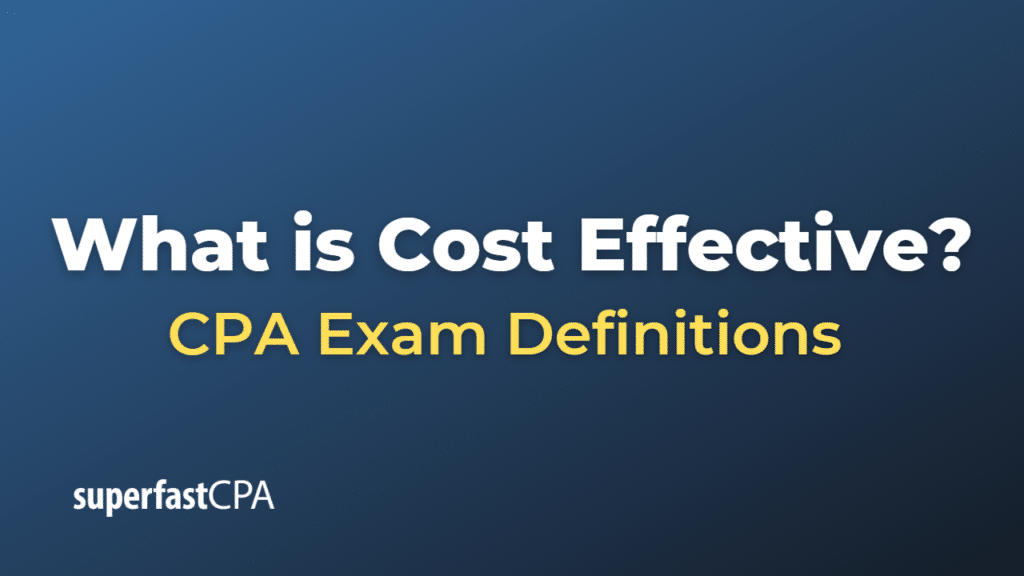Cost Effective
“Cost-effective” is a term used to describe a product, service, or method that delivers the best possible outcome for the cost incurred. In other words, it provides a high level of value relative to the resources invested.
Something is considered cost-effective when it’s able to achieve its intended objectives or desired results without wasting resources such as time, money, or effort. It doesn’t necessarily mean the cheapest option; rather, it’s about maximizing return on investment.
For instance, if a business has two marketing strategies to choose from, and both are expected to yield the same result, but one costs significantly less than the other, the less expensive strategy would be considered the more cost-effective of the two.
In other contexts, like healthcare or public policy, cost-effectiveness analysis is often used to compare the costs and outcomes of different options to understand which offers the best value for the resources expended. For example, a cost-effectiveness analysis might compare different treatments for a medical condition based on their cost per quality-adjusted life year (QALY) gained.
In summary, cost-effectiveness is about more than just minimizing cost—it’s about achieving the best possible outcome for the resources invested.
Example of Cost Effective
Let’s imagine you’re running a small online business selling handmade crafts. To grow your customer base, you decide to invest in advertising. You have two options:
- Run a series of small ads in a national magazine that reaches a large audience, costing $5,000.
- Invest in social media advertising targeting people who have shown interest in handmade crafts, costing $2,500.
In both cases, you’re hoping to reach new customers and increase sales. After running both campaigns, you find that:
- The magazine ads brought in 50 new customers, resulting in additional sales of $5,000.
- The social media advertising brought in 40 new customers, resulting in additional sales of $4,000.
At first glance, it might seem like the magazine ads were more effective because they brought in more customers and more revenue. However, when you consider the cost-effectiveness of each approach:
- The cost per new customer from the magazine ads is $100 ($5,000 cost / 50 customers), and these ads broke even on revenue.
- The cost per new customer from the social media ads is $62.50 ($2,500 cost / 40 customers), and these ads generated a profit of $1,500 ($4,000 revenue – $2,500 cost).
So even though the social media campaign brought in fewer customers, it was more cost-effective. It cost less per new customer and generated a profit, while the more expensive magazine ads only broke even. This is a clear demonstration of how cost-effectiveness is not just about the total cost or the total outcome, but the relationship between the two.













